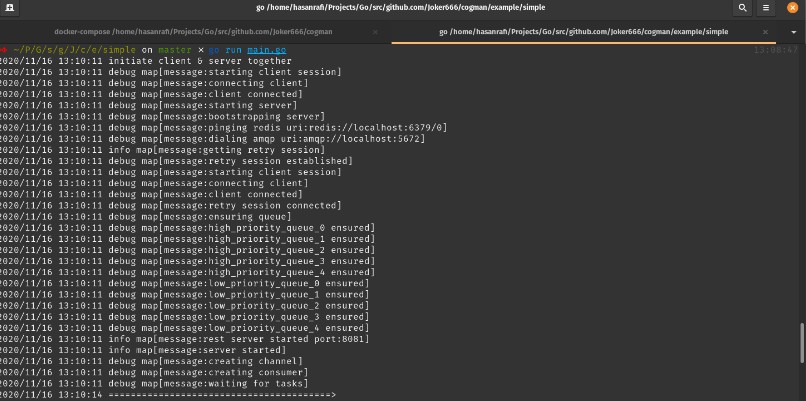
Golang mongodb drivers#
Furthermore, MongoDB produced a specification for features of MongoDB drivers in 2015, which mgo does not meet, making it somewhat inconsistent with MongoDB’s official drivers for other languages. This is still maintained with bug fixes and minor changes, but no significant additional development has taken place since it was forked. A couple of forks have appeared since then - the most popular of which being globalsign/mgo. The original developer of mgo formally paused working on it in early 2018 and since then that repository has been dormant. It is very much suitable for production use in commercial environments and has worked flawlessly for us in Authinity to date. mgo has good godocs and community support, and is widely adopted. For a community maintained project, it does a very good job of providing necessary reliability and functionality for both small and large projects that wish to use MongoDB and Go. Prior to mongo-go, mgo was somewhat the only choice when it comes to MongoDB in Go - but it does not disappoint. Mgo is an open source library for working with MongoDB databases in Go that has been around since 2011. For more information on Authinity, please visit. Authinity is used for authentication in our own internal suite and currently available to all to try for free. We decided to build Authinity when we discovered that no existing off-the-shelf product or service seemed to satisfy our clients’ needs for always up-to-date, best practice security coupled with flexible policies to meet their own compliance requirements. What is Authinity?Īuthinity is a modern identity management service built by Avco Systems. It usually handles the underlying connection pool and will handle all communication with the database server in the required protocol.
Golang mongodb driver#
What is a database driver?Ī database driver is an adapter, usually in the form of a software library or program, that provides an interface to allow you to easily connect to a database. How easy is it to migrate existing large data(base) projects? How does it compare to the de-facto standard - mgo? We take an in depth look by taking you through one of our recent data migration projects Authinity, our identity management service. Result := collection.As a MongoDB Partner, we were excited when late last year MongoDB released their own driver in alpha for Google’s Go programming language. 7) Create an instance of an options and set the desired options "context" "fmt" "log" "time" "go./mongo-driver/bson" "go./mongo-driver/mongo" "go./mongo-driver/mongo/options"įunc findOneAndUpdate(url string, db string, coll string) (bson.M, error) ,
Golang mongodb how to#
Unfortunately none of the tutorials out there show you how to use this function.īelow is a very simple example to illustrate how to use FindOneAndUpdate using the mongo-go-driver.
Golang mongodb update#
To do so I make use of the findOneAndUpdate function when I need to update a resource, and so it is natural for me to do so even when using Go. In the past when using mongodb with NodeJS I made heavy use of Mongoose.js and usually in my REST API’s I like to return any newly created resources to facilitate the client, thus avoiding that a client has to perform a subsequent GET request after updating a resource. Find One And UpdateĪll the examples and tutorials I found seem to focus solely on the default and most commonly used functions in the driver.


This is the getting started with Go tutorial and it’s extremely good.Īlso if you have been using a community driver like mgo here is a post regarding migration steps to the official mongo driver.Īnd finally here is the official Go Doc for the driver. Here are a few just in case you didn’t come across them yourself. There are several really good blog posts out there, especially the ones from the mongodb team. It is developed by the mongodb team and is what you would use today to perform any CRUD operations on mongodb from your Go application. The mongo-go-driver is the official driver for mongo for Go. This is a very short post just to show you how to use the findOneAndUpdate function from the official mongodb driver for Go. That is why I decided to write this post. This is especially true for the mongo-go-driver. I am not saying that Go is not popular, all I am saying is that sometimes I wish there were more examples out there. When I started to develop in Go I found that one of the things that sometimes is missing is the multitude of examples on the net like you would find with NodeJS.


 0 kommentar(er)
0 kommentar(er)
